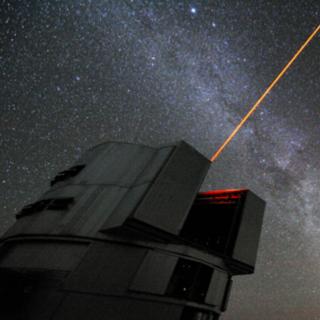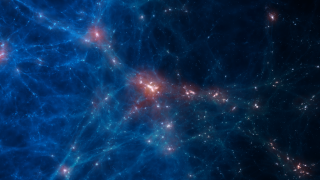Bibcode
Grand, Robert J. J.; Di Cintio, Arianna; Arjona-Gálvez, Elena
Bibliographical reference
Astronomy and Astrophysics
Advertised on:
10
2024
Journal
Citations
23
Refereed citations
18
Description
Aims. Recent observational studies suggest that feedback from active galactic nuclei (AGNs) may play an important role in the formation and evolution of dwarf galaxies, an issue that has received little attention from a theoretical perspective. Methods. We investigated this using two sets of 12 cosmological magnetohydrodynamic simulations of the formation of dwarf galaxies (108.3M⊙ ≤ M* ≤ 109.8M⊙): <!--inline-formula id="FI1"> <alternatives> 10 8.3 M ⊙ ≤ M ⋆ ≤ 10 9.8 M ⊙ <![CDATA[$ 10^{8.3}\,\mathrm{M}_{\odot} \leq {M}_{\star} \leq10^{9.8}\,\mathrm{M}_{\odot} $]]> <inline-graphic xmlns:xlink="http://www.w3.org/1999/xlink" id="img_eq1" mime-subtype="gif" mimetype="image" xlink:href="aa49439-24-eq1.gif"/> </alternatives> one set using a version of the AURIGA galaxy formation physics model including AGN feedback and a parallel set with AGN feedback turned off. Results. We show that the full-physics AGN runs satisfactorily reproduce several scaling relations, including the black-hole-to-stellar mass (MBH-M⋆), the black-hole-to-sigma (MBH-σ⋆), and the baryonic Tully-Fisher relation. We find that the global star formation (SF) of galaxies run with an AGN is reduced compared to the one in which the AGN has been turned off, suggesting that AGN feedback is a viable way of suppressing SF in dwarf galaxies, even though none of our galaxies is completely quenched by z = 0. Furthermore, we find a tight correlation between the median SF rates and the MBH/M⋆ ratio in our simulated dwarfs. Star formation is suppressed due to gas heating in the vicinity of the AGN: less HI gas is available in AGN runs, though the total amount of gas is preserved across the two settings within each galaxy. This indicates that the main effect of AGN feedback in our dwarfs is to heat up and push the gas away from the galaxy's centre rather than expelling it completely. Finally, we show that the two galaxies harbouring the largest supermassive black holes have suffered a considerable (up to ∼65%) reduction in their central dark matter density, pinpointing the role of AGNs in determining the final dark matter mass distribution within dwarf galaxies. This pilot paper highlights the importance of modelling AGN feedback at the lowest mass scales and the impact this can have on dwarf galaxy evolution.
Related projects

Galaxy Evolution in the Local Group
Galaxy formation and evolution is a fundamental Astrophysical problem. Its study requires “travelling back in time”, for which there are two complementary approaches. One is to analyse galaxy properties as a function of red-shift. Our team focuses on the other approach, called “Galactic Archaeology”. It is based on the determination of galaxy
Emma
Fernández Alvar

Numerical Astrophysics: Galaxy Formation and Evolution
How galaxies formed and evolved through cosmic time is one of the key questions of modern astronomy and astrophysics. Cosmological time- and length-scales are so large that the evolution of individual galaxies cannot be directly observed. Only through numerical simulations can one follow the emergence of cosmic structures within the current
Claudio
Dalla Vecchia